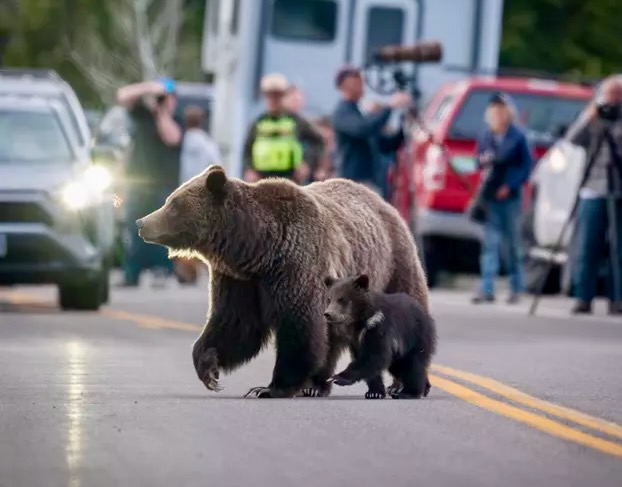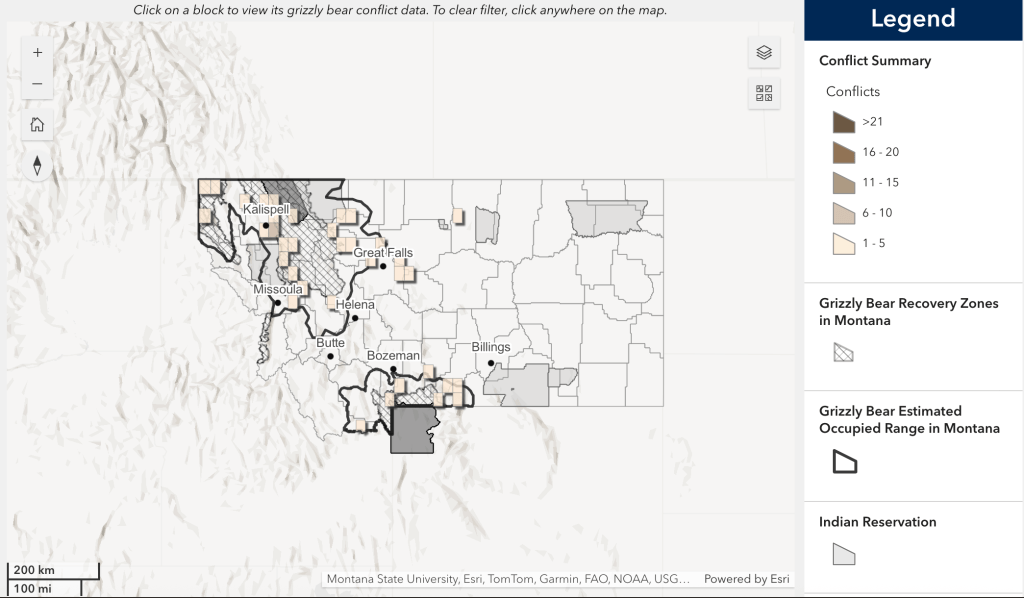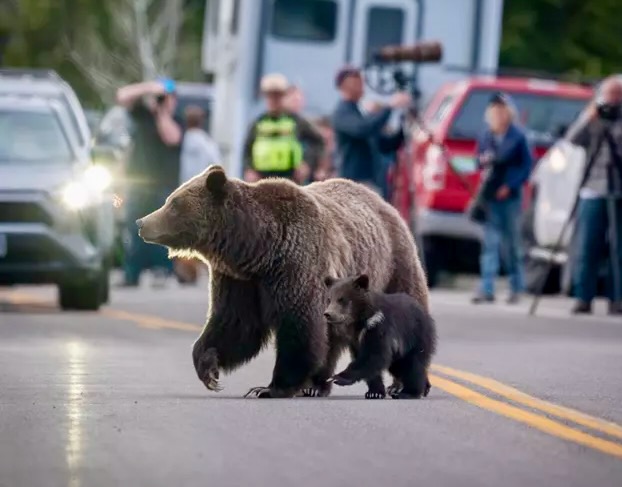 A grizzly sow and her cub cross a road in front of onlookers. Credit: Adams / NPS
A grizzly sow and her cub cross a road in front of onlookers. Credit: Adams / NPS
As grizzly bear populations increase and their range expands, Montana wildlife officials have launched a new online dashboard to help track bear-related incidents. The tool comes as lawmakers push to remove federal protections for the grizzlies, including a proposal that cleared a key congressional vote last week.
Earlier this month, Montana Fish, Wildlife and Parks unveiled its new Grizzly Bear Conflict Dashboard, a public resource showing the type and location of various conflicts with grizzlies.
The agency last September introduced a similar online dashboard to provide tracking of grizzly bear mortalities across the state. According to that platform, 14 grizzly mortalities have been recorded so far in 2025.
According to FWP, the conflict new dashboard is updated regularly, though not until each incident is resolved, a process that can take several days. So far this year, the platform has recorded 67 grizzly bear conflicts across the state. Of those, 20 involved direct human interaction, 23 were depredation events where livestock or other animals were killed, and two involved animals that were injured but not killed. An additional 17 conflicts were linked to unnatural food sources, while seven incidents involved property damage and five were tied to agricultural losses.
 Click the image above to access the Grizzly Bear Conflict Dashboard. Credit: FWP
Click the image above to access the Grizzly Bear Conflict Dashboard. Credit: FWP
“Managing grizzly bear conflicts continues to be a priority for our staff and the workload is increasing every year,” FWP Director Christy Clark said in the announcement. “This dashboard will help inform the public about just what kinds of conflicts Montanans are dealing with and where they’re happening.”
Greg Lemon, communication and education administrator for FWP told Mountain Journal in an email that spring and summer are always a busy time for staff responding to bear conflicts and that the goal of both dashboards is transparency and awareness.
“We want the public to be aware of the efforts we’re making to address conflicts and understand just how busy that task is given the grizzly bear population has expanded like it has, both in numbers and in distribution, as they’ve surpassed recovery goals for the Northern Continental Divide and Greater Yellowstone Ecosystems,” he wrote.
So far this year, the platform has recorded 67 grizzly bear conflicts across the state. Of those, 20 involved direct human interaction.
FWP is working on a third dashboard that will show where and when grizzly and black bears are relocated and will be released later this summer.
Meanwhile, a proposal by a Wyoming Republican representative to remove Endangered Species Act protections from Yellowstone grizzly bears narrowly cleared a key congressional vote on July 15.
Cosponsored by Republican Congressman Ryan Zinke and Wyoming Congresswoman Harriett Hageman, the proposal narrowly passed a U.S. House Committee on Natural Resources vote. The bill would reinstate a 2017 decision by the U.S. Fish and Wildlife Service to remove federal protections from grizzly bears. Language in the bill also seeks to make the action immune to a court challenge.
In a February statement, Zinke contended that grizzly bear recovery should be celebrated as a win. “There must be an offramp for wildlife on the list once their goal is reached,” he said.
Related
